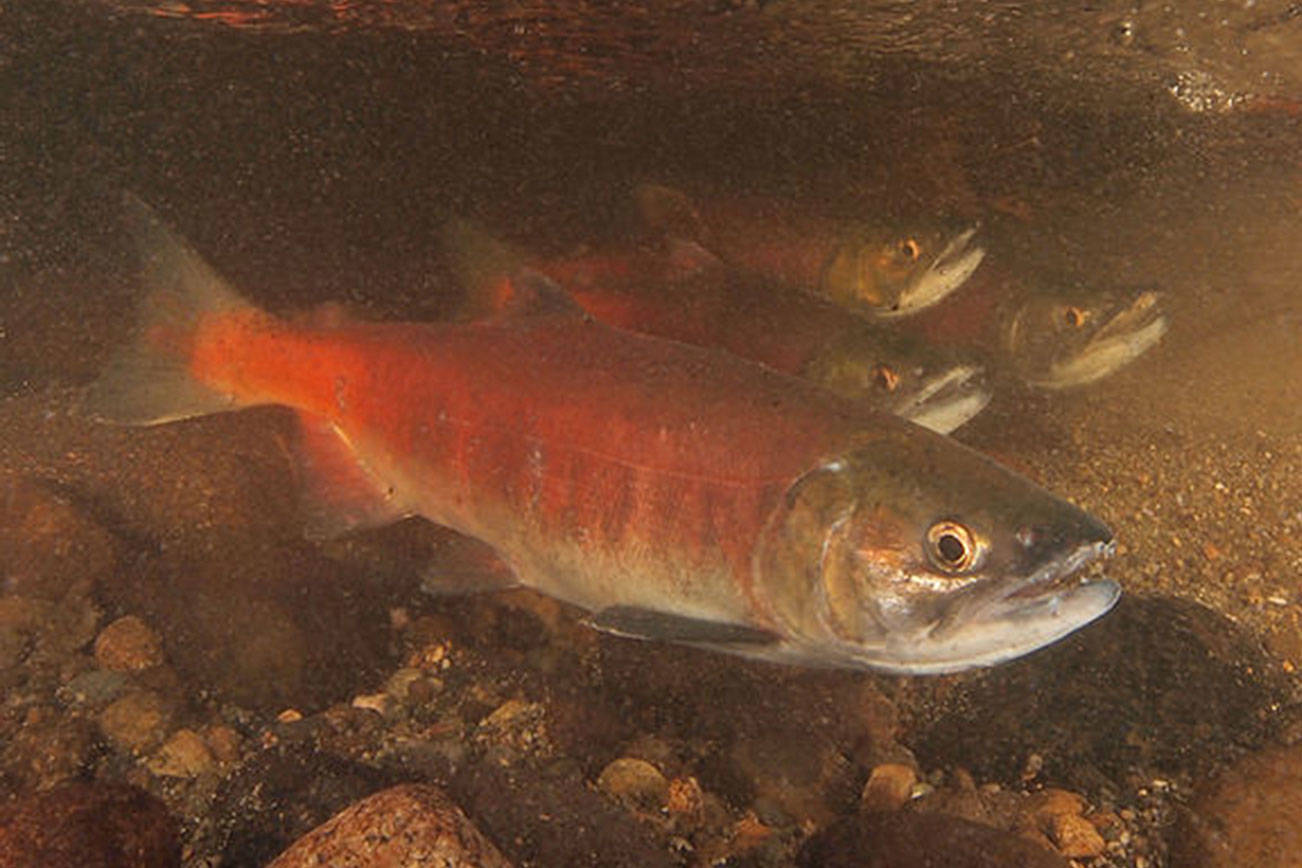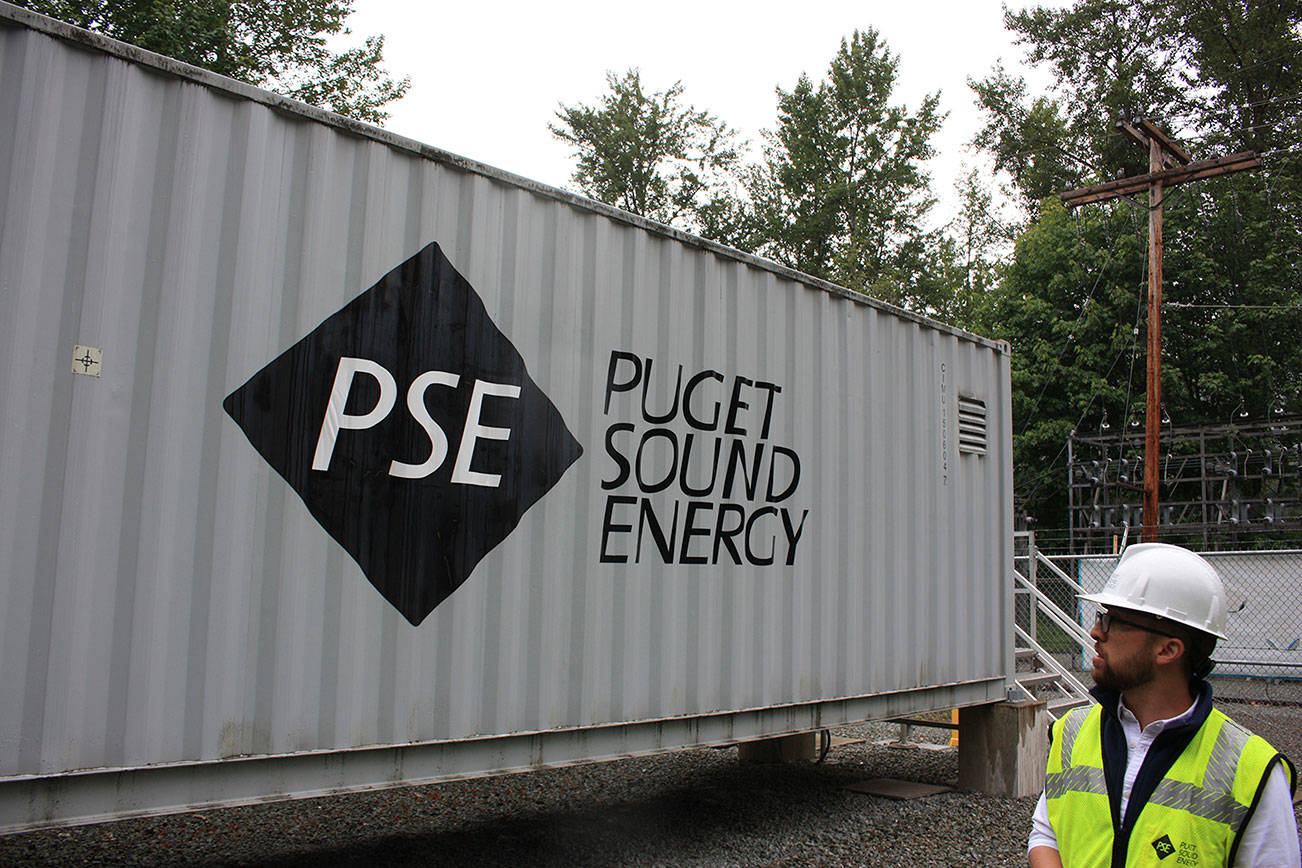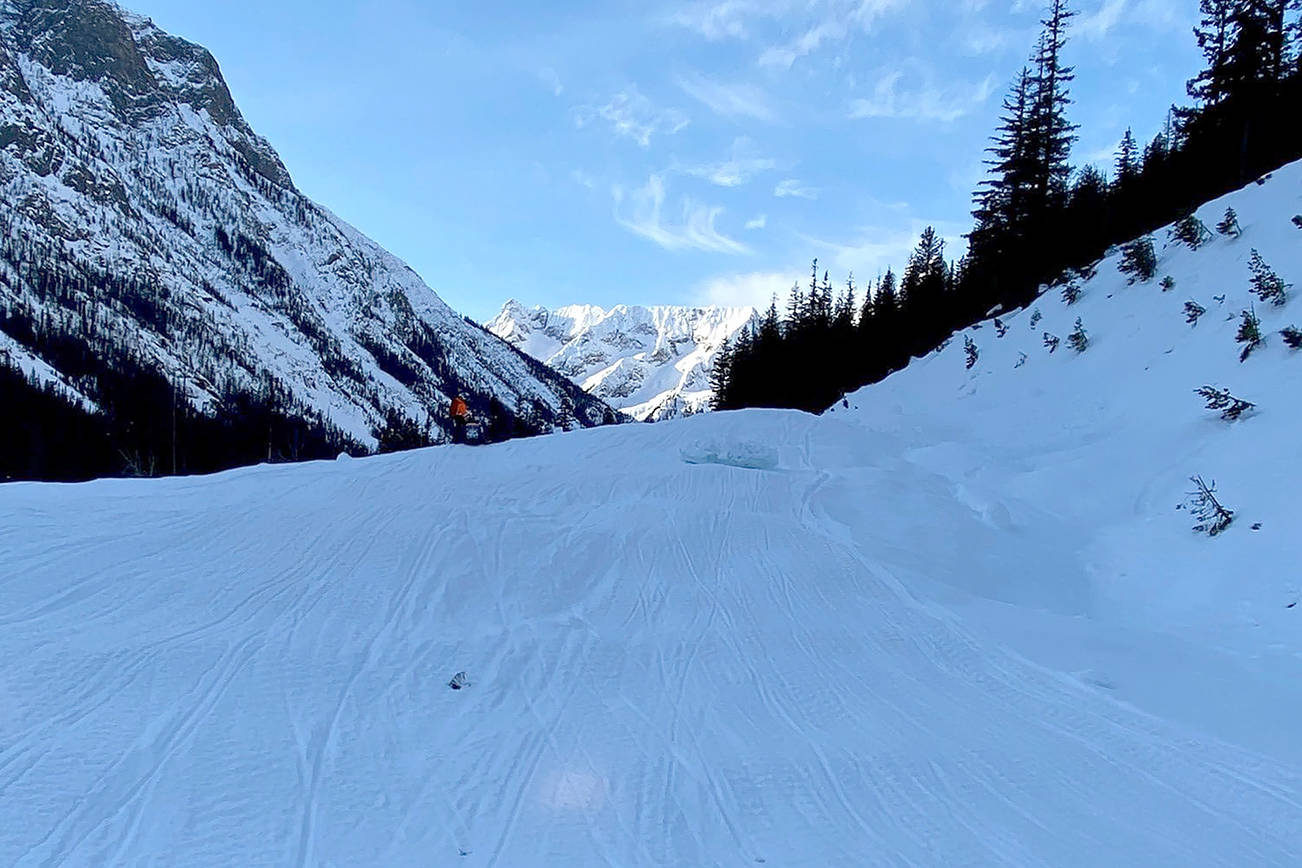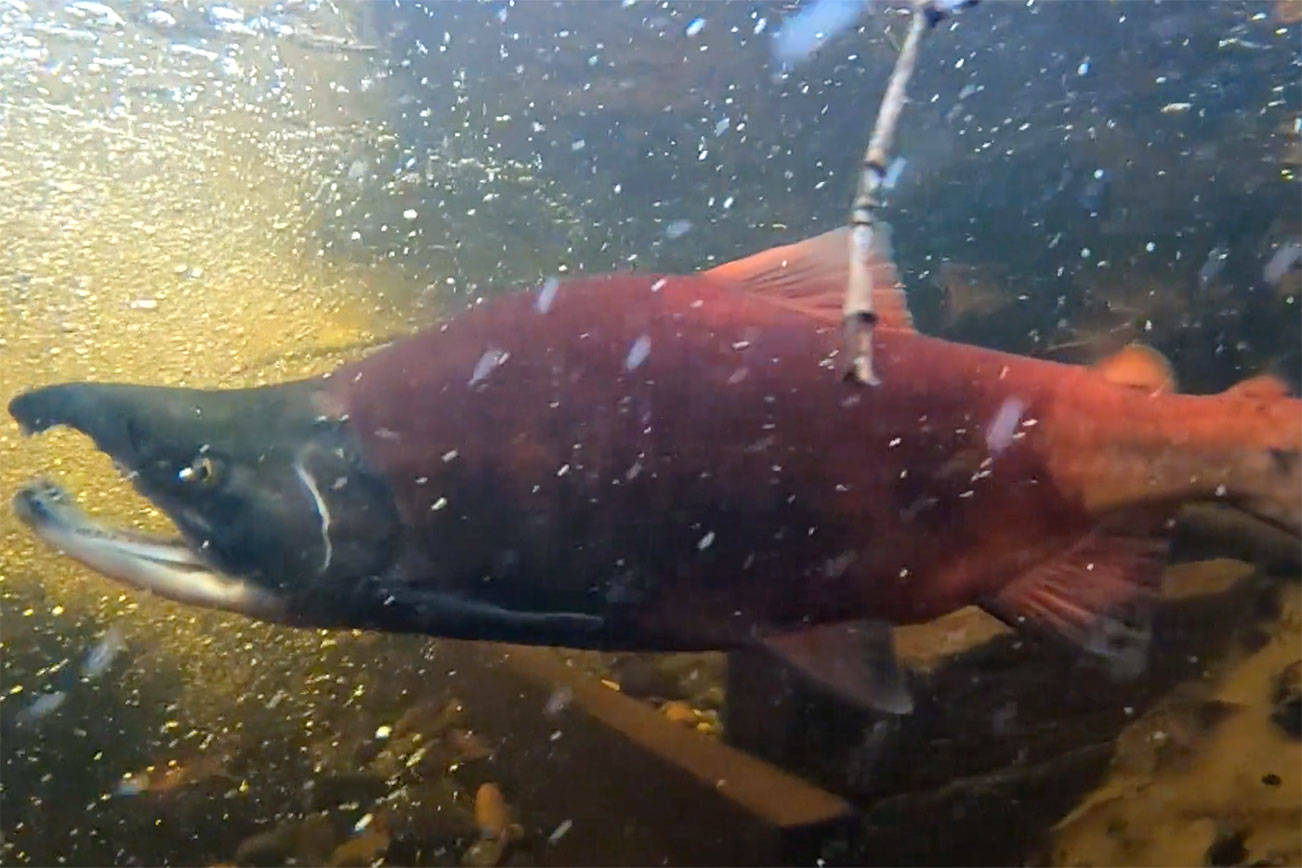There’s little good news these days for salmon in the Lake Washington watershed, and new information from researchers paints an even bleaker future for some of Washington state’s most cherished animals.
The number of kokanee salmon returning to spawn in the tributaries of Lake Sammamish was low again this year, prompting King County to start looking at ways to preserve this freshwater species. On top of this, local sockeye species that migrate to the Pacific Ocean hit record low numbers last year because an unknown disease, or combination of diseases, is wiping out the adult salmon when they return to Lake Washington.
In Lake Sammamish, around 100 kokanee returned to spawn this year, significantly higher than the 19 seen last year, but still much lower than levels that would indicate a healthy population. King County environmental affairs officer David St. John said the low number of returning fish provides evidence for their hypothesis that a lake condition known as “the squeeze” is killing the fish.
Kokanee, a freshwater variety of sockeye, have roughly three-year reproductive cycles, and some 230,000 kokanee fry entered the lake in 2016. Of the multitude that went into the lake, only around 100 returned this year, in line with the county’s worst-case scenarios. “It’s off-the-charts bad. Though this is not unexpected, it’s definitely the low end of the range that we thought was possible,” St. John said.
Lake Sammamish kokanee are a species of sockeye that spend their entire lives in the freshwater lake nestled between Sammamish and other large Eastside cities. Last year’s low numbers prompted biologists to begin examining courses of action in case this year’s count came in low, including a captive breeding program, where fish are raised in large tanks or ponds for three years until they spawn. This option is expensive, but was proposed after last year’s dismal counts. “We are actively exploring doing that with some of the fry that we have on hand now,” St. John said.
For the first time ever, the county is collecting Sammamish kokanee sperm to freeze and preserve in coming years, as well as capturing female fish and storing their eggs. So far they have stored around 7,500 eggs, which will spawn fishery kokanee. Additionally, the county is looking at releasing fish in the fall, keeping them from entering the lake during their normal spring run in an attempt to keep them away from possibly warm, deadly waters.
“It’s our ultimate goal to have a self-sustaining population and we hope we can get to that point sooner rather than later, but we’ve experienced a pretty strong bottleneck in the number of fish over the past three years that we believe was related to conditions in the lake during the summers of 2014, 2015 and 2016,” King County biologist Jim Bowers said.
This year’s returns provide more evidence that Lake Sammamish is in some years an inhospitable place for young fish, especially during the hot summers of 2014–16. During these years, the heat appears to have driven the young, cool-water-loving fish deeper into the lake into zones with inadequate oxygen to support them, ultimately killing them. Toward the bottom of the lake are decomposing leaves, plant matter and animals, which all lower oxygen levels. During relatively favorable years for the fish, they can dive deeper into the lake to find cooler water without being pushed into oxygen-scarce zones, but during hot summers, this habitable zone often disappears.
“If our hypothesis is right, and we’ve proven that we can raise these fish in the hatchery for some portion of the lifespan, even if there is a squeeze, we’ll still get production out of this return,” St. John said.
Bowers said he is optimistic that their strategies can repopulate the lake, increasing the kokanee population from its current level from an estimated 600 fish that are capable of spawning.
Canary in the coal mine for climate change
While it is difficult to extrapolate what Lake Sammamish kokanee can tell us about salmon health in general in Puget Sound, water is one of the natural systems most vulnerable to climate change, and salmon are often viewed as a proverbial canary in the coal mine for regional climate change. Researchers, government biologists, and conservation groups have been coordinating to figure out what is happening to the area’s native salon species. St. John said the survival rates for kokanee, sockeye, coho, and chinook salmon have been poor during the past several years.
“There is this growing exploration or desire to understand what’s really going on in this system because the survival rates have been really poor, and our sense is it’s bigger than kokanee. We’re seeing that in kokanee, but it’s hitting other salmon too,” St. John said.
Other trends, specifically among Lake Washington sockeye, are even more troubling. Aaron Bosworth, a biologist with the Washington Department of Fish and Wildlife, said sockeye are dying en masse in Lake Washington from disease — a phenomenon that has increased over the past five years, during which researchers saw three of the lowest returns on record. The 2018 season was the worst ever, with only 3,500 sockeye spawning in the Lake Washington system. The previous low point was 7,000. A healthy spawning count would be more than 100,000.
These are adult salmon dying between when they return from the ocean, but before they make it out of Lake Washington into spawning tributaries. “These fish seem to be coming in contact with some diseases, and when they enter fresh water, they die before they get up to the spawning grounds,” Bosworth said. “We don’t fully understand what disease — it’s kind of a host of different parasites that attack these fish.”
There are no proposed solutions to increasing sockeye mortality like there are for Lake Sammamish kokanee, and taken with other factors, it raises the possibility of at least two natural salmon runs disappearing from the Lake Washington/Cedar River and the Lake Sammamish systems forever.
Bosworth said the state is still studying the causes of the dramatic population declines. He said ensuring many native salmon species survive will likely require increasingly expensive programs, such as net pens in Lake Washington, or pumping cold water from the the bottom of the lake into warmer top levels. “Over the last five years, it’s become noticeably worse, and we don’t fully understand it, but I think that it may be here to stay. To me, it seems like it’s linked with the warmer temperatures that we’ve been seeing,” Bosworth said. “We continue to study it and try to understand it better, but I don’t know if it’s something we will be able to fix or not.”
Other factors are at work, including warm ocean conditions that appeared in the Pacific Ocean during 2014, known as the “warm blob,” said WDFW salmon analyst Aaron Dufault. Storms usually appear over the north Pacific, mixing up the water and pulling colder water closer to the surface, a process that didn’t happen. Then in 2015, the blob moved closer to shore at the same time a drought struck mountain snow packs along the West Coast. Coho and pink salmon were hit especially hard. “They were impacted to a greater degree, or at least maybe the effects are a little more acute,” Dufault said.
A loss of habitat is also credited with falling numbers. This includes well-known conditions like the building of seawalls along lakes and rivers, the removal of trees and shrubs near bodies of water, and the straightening of streams and rivers. All these remove valuable places for young fish to hide from predators and find cool places to rest.
Emerging research also indicates that higher levels of carbon dioxide (CO2) in the water could interfere with salmon’s sense of smell, which indicates danger is near, like the smell of other fish blood. Salmon are also vulnerable to runoff that’s full of toxic chemicals, which during storms can be flushed off roadways and into streams and lakes. Exposure to enough chemicals can kill fish in a matter of hours. Federal researchers are studying whether light levels from the urban centers lining both Lake Washington and Sammamish may be helping predators find young fish at night.
One small silver lining is the smaller chinook population in the Cedar River, which Bosworth said had largely managed to avoid the diseases that are killing sockeye as they travel through Lake Washington.








